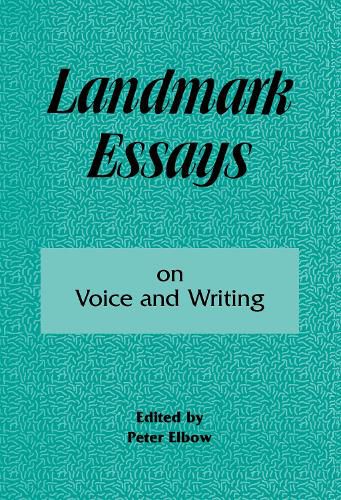Readings Newsletter
Become a Readings Member to make your shopping experience even easier.
Sign in or sign up for free!
You’re not far away from qualifying for FREE standard shipping within Australia
You’ve qualified for FREE standard shipping within Australia
The cart is loading…






Section 1 of this volume describes three major debates about voice. They include:
* the overarching debate: discourse as text vs. discourse as voice;
* the traditional debate in rhetoric: ethos as real virtue in the real person vs. ethos as the appearance of virtue; and
* the modern debate: voice as self vs. voice as role.
These debates involve large, ideological questions about the nature of self or identity and about the relation of the text to the writer. They are all the more troublesome and unresolvable because they tend to be cast in binary, either/or terms.
Section 2 responds to these debates by showing that they don’t need to be resolved in either/or terms. Looking carefully at the term voice shows that it has some fairly noncontroversial meanings when applied to writing. Thus, most of this section is devoted to an extended exploration of a family of five meanings for the term voice in writing – audible voice or information, dramatic voice, recognizable or distinctive voice, voice with authority, and resonant voice or presence. These meanings make the concept of voice solid and usable apart from the theoretical debates.
The two theoretical debates only come up in relatively circumscribed arenas and so don’t muddy most uses of the concept of voice in writing. In short, Elbow’s hope is that he can make descriptive claims about the meanings of voice in writing about which people from various ideological camps will be able to agree.
$9.00 standard shipping within Australia
FREE standard shipping within Australia for orders over $100.00
Express & International shipping calculated at checkout
Section 1 of this volume describes three major debates about voice. They include:
* the overarching debate: discourse as text vs. discourse as voice;
* the traditional debate in rhetoric: ethos as real virtue in the real person vs. ethos as the appearance of virtue; and
* the modern debate: voice as self vs. voice as role.
These debates involve large, ideological questions about the nature of self or identity and about the relation of the text to the writer. They are all the more troublesome and unresolvable because they tend to be cast in binary, either/or terms.
Section 2 responds to these debates by showing that they don’t need to be resolved in either/or terms. Looking carefully at the term voice shows that it has some fairly noncontroversial meanings when applied to writing. Thus, most of this section is devoted to an extended exploration of a family of five meanings for the term voice in writing – audible voice or information, dramatic voice, recognizable or distinctive voice, voice with authority, and resonant voice or presence. These meanings make the concept of voice solid and usable apart from the theoretical debates.
The two theoretical debates only come up in relatively circumscribed arenas and so don’t muddy most uses of the concept of voice in writing. In short, Elbow’s hope is that he can make descriptive claims about the meanings of voice in writing about which people from various ideological camps will be able to agree.